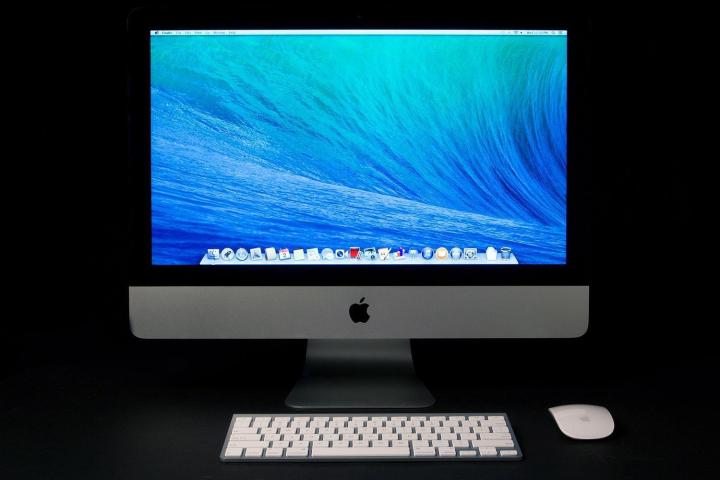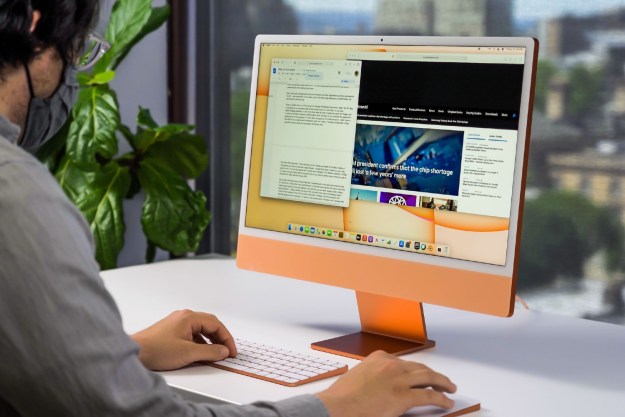
The company’s glitzy and glamorous iPad, iPhone, and Macbook lines have received many an overhaul, but Apple’s iMacs have been saddled with aging hardware. Simply put, the iMac is due for a substantial upgrade.
With that in mind, here are the changes we want to see in Apple’s new iMacs.
Retina resolution, but with options
To this point, Apple has given its iPhones, iPads, and Macbook Pro laptops the Retina treatment. Extending that to the company’s iMac line would be a natural progression.
Right now, the 21.5-inch iMac boasts a 1080p display while the 27-inch model wears a 2,560 × 1,440 screen. Recent rumors point to Apple launching a new iMac finally boasting a Retina screen, and we’d be very surprised if that doesn’t end up the case.

Of course, high-res displays like these aren’t for everyone, and 1080p may very well be the sweet spot of monitor resolutions. For that reason, Apple should continue offering 1080p as a configurable option as well. 4K may be great, but our eyes were hurting just a few minutes after we started using a 4K monitor.
Greater graphics
When Apple released new iMacs in 2013 — when the company issued a refresh of the 21.5-inch model earlier this year –it offered a range of graphics hardware, from integrated Intel chips to Nvidia’s 700M series GPUs. In less than a year, Nvidia has launched not one but two new lines of mobile graphics cards: the GeForce GTX 800M and the GeForce GTX 900M series.
This time around, we want to see Apple outfit its high-end iMacs with the new 900M chips. We recently tested the 980M and found performance that isn’t far off from the powerful desktop version, the GTX 980.
In the mid and low-end versions, though, we expect and want to see Apple continue to use Intel’s best integrated chips (like the Iris and Iris Pro). Nvidia has released only the 970M and 980M to this point; it would be unreasonable to expect those GPUs in the entire new iMac lineup until slower (and cheaper) chips join the family tree.
That’s where Nvidia’s 800M series can come in.
With the 840M, 850M, and 860M chips from earlier this year at Apple’s disposal, the new iMacs can offer upgrades with Nvidia’s last-gen low and mid-range graphics chips. In this way, Apple’s new iMacs could offer substantial boosts to graphics performance compared to what’s currently offered.
SSDs across the board
Right now, every single default iMac configuration ships with either a 500GB or 1TB mechanical hard drive. Of course, you can choose to upgrade with an SSD, but that’ll cost you a fair bit extra.
Want to swap out the mechanical drive with a 256GB SSD? Add $200 to the total price. Want to double that to a 500GB SSD? Add $500 to your iMac’s price tag. This shouldn’t be the case going forward — the price of SSDs has dropped significantly.

Once upon a time, large SSDs were extremely expensive; today the 500GB Samsung 840 EVO SSD costs $250 on Newegg, and has a five-star rating across 260 user reviews. The 250GB version costs a measly $128 as of this writing, and that drive has gotten even more positive praise across 553 reviews. It too has a five-star rating. Bought in bulk by Apple, they’d be cheaper still.
SSDs should be offered on all of the new iMacs by default. Sure, if someone prefers more local storage, they should have the option to swap in a larger mechanical drive. But SSDs are cheaper than ever. They should be the standard, and shouldn’t cost as much as they do now.
Intel’s Core M chip could make iMacs super slim
Intel’s fanless Core M processor could pave the way for computers that are thinner and lighter than anything we’ve ever seen. That’s because systems powered by Broadwell-based Core M chips — which runs markedly cooler than earlier chipsets — are also free to strip out any components associated with CPU cooling.
This includes heatsinks, vents, and other parts that take up valuable space inside a computer. Without the need for these pieces, OEMs that use Core M chips in their rigs can whittle away their computers into ultra-thin, super-light machines.
Apple could very well opt to do the same with new iMacs, at least on the low end of the spectrum. While it’s wise to keep super-powerful Intel CPUs in the higher-end iMacs, offering Core M-powered iMacs could let the company make an ultra-thin iMac that would have the masses salivating.
USB Type-C, the Swiss Army Knife of ports
In the works for years, USB Type C seems more science fiction that reality. However, the USB 3.0 Promoter Group and VESA both promise a multitude of awesome features in the upcoming ports and connectors, including support for DisplayPort video, 4K monitors, 5K, monitors, ultra-fast 10GBps data transfer rates, and the ability to deliver 100 watts of power.

On top of that, USB Type C connectors are expected to be significantly thinner than current USB 3.0 and USB 2.0 ports. This attribute, in conjunction with the fact that Core M chips are fanless, could help computer makers like Apple produce an iMac that’s thinner and lighter than anything before.
It’s also worth noting that the USB 3.0 Promoter Group expects devices packing support for USB Type-C to arrive “by early 2015.” This lines up with a possible release timeframe for Apple’s rumored new iMacs.
Will it all happen?
When Apple first revealed OS X Yosemite earlier this year, it was clear that the company devoted a lot of energy towards making an operating system that made the lives of desktop users easier. With features like Handoff, Continuity, and the new version of Spotlight, Yosemite promised a super-charged desktop experience.
It will be interesting to see if Apple decides to pair this with the release of a new fleet of rejuvenated iMacs as well. Those could be a killer combination.
Editors' Recommendations
- My hopes for a new iMac Pro have been dashed — for now
- A new iMac Pro could still launch. Here’s what I want from it
- Apple’s M3 Max appears to keep up with Intel’s top desktop CPU
- The M3 is the most important chip Apple has ever made
- Everything announced at Apple’s ‘Scary Fast’ event: iMac, M3, and more


